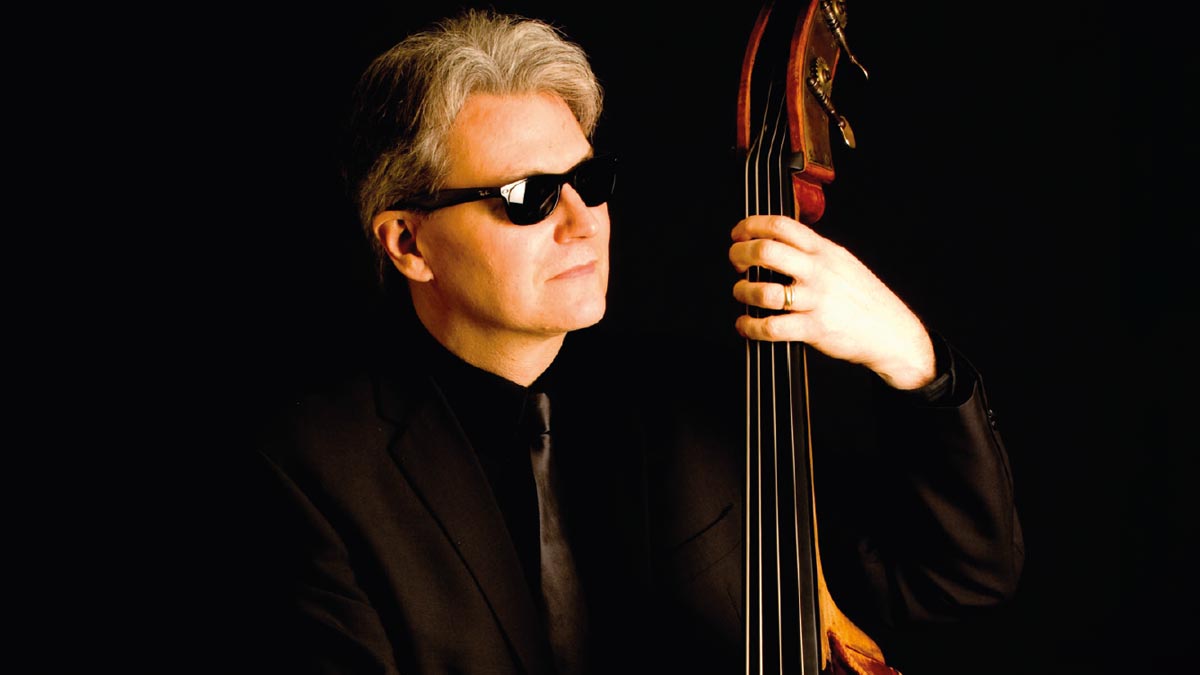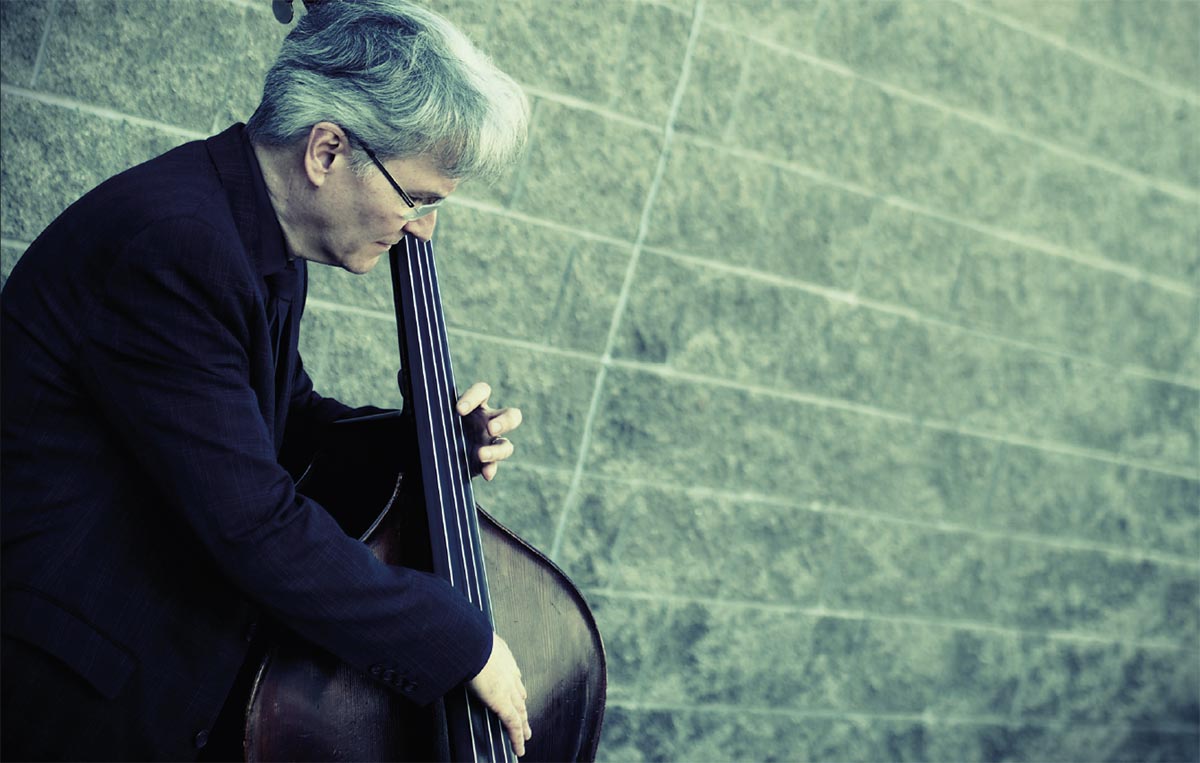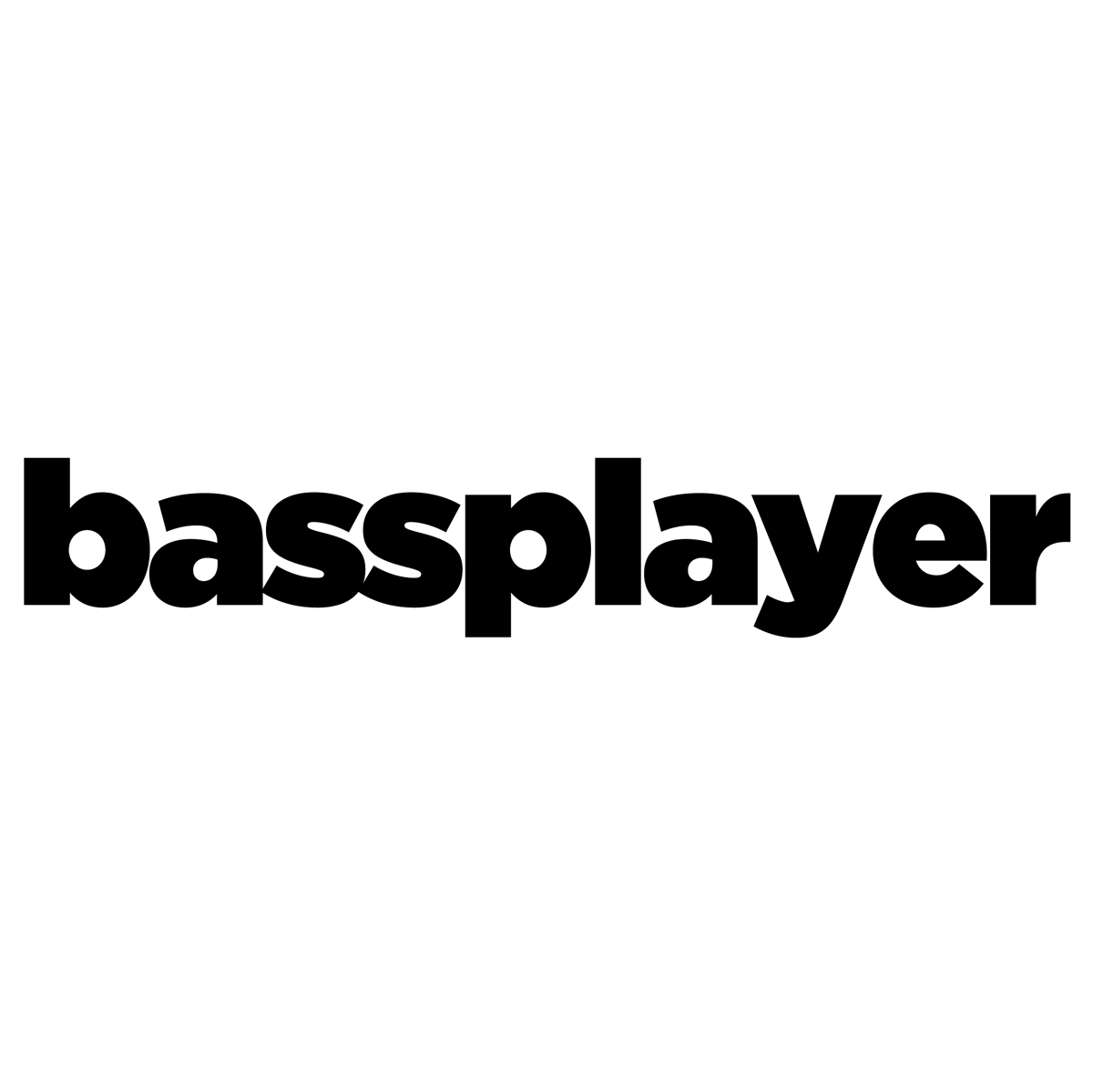John Goldsby: “It’s expected nowadays that you know how to play Brazilian music, or funk, or hip-hop, or metal. A lot of younger bass players can do it all“
Goldsby is back with three EPs from his eponymous trio, a much-needed perspective on the future of bass, and a definitive answer to the question, ‘Is jazz dead?’

Bassist, bandleader, composer, teacher, clinician, and author John Goldsby is a dream interviewee, and not just because he’s an interesting guy with a wealth of experience. A journalist to the core, having contributed to this magazine for many years, Goldsby even supplies a tailor-made bio for features such as this. Details like this make our job both easy and fascinating.
Since 1994, Goldsby has held the position of solo bassist with the Grammy Award-winning Westdeutscher Rundfunk Big Band (Cologne Radio Big Band). From 1980 to 1994, Goldsby was a fixture on the New York jazz scene. He has authored The Jazz Bass Book, Jazz Bowing Techniques For The Improvising Bassist, and Bass Notes.
He teaches at the Conservatorium in Maastricht in Holland, and his new video lesson series Tell Your Story is available at Discover Double Bass. The new album, Segment, from the John Goldsby Trio featuring Hans Dekker and Billy Test, was released as three EPs last December and a CD in February. “I think it’s a really well-recorded project – a very modern-sounding, beautiful, but classic jazz trio album,” he says.
One of my favorite engineers has a quote that the third take is the take that proves that you should have taken the first or the second one – at least when you’re doing jazz records
Asked about the bass he plays on the new album, Goldsby explains: “It was made by a German bass-maker, Bjorn Stoll, and it’s relatively new – only two years old. It sounds good and it’s fun to play. In the studio I used two microphones, and there was no pickup sound. It was a very basic setup.”
Does he prefer to do multiple takes or go with feel, we ask? “Generally, the first takes are the best if we’re playing jazz. We always have the option to say ‘Okay, let’s do a second take’. One of my favorite engineers has a quote that the third take is the take that proves that you should have taken the first or the second one – at least when you’re doing jazz records. If you’re producing pop music, then you can take everything apart and cut and paste as you need.”
As for arranging versus improvising, Goldsby explains: “Usually I like to rehearse once, but not too intensely – just to get the heads and the melodies together. Then we’ll talk about it once in the studio and then go for the take. With players of the calibre of those in our trio, it works out fine, especially because I’ve got a young piano player on the record, Billy Test.
“He just turned 32, and I really like having this young guy, full of energy, in the band. He’s a brilliant player, and he has that youthful attitude of ‘Let’s go for it – let’s go out on a limb and see what happens’.”
Get The Pick Newsletter
All the latest guitar news, interviews, lessons, reviews, deals and more, direct to your inbox!
Education is a major part of Goldsby’s day-to-day activities, he tells us. “I recorded an online course last summer for a company called Discover Double Bass. The course, Tell Your Story, came out in January, and it’s about improvising jazz solos. I also did a course called Lay It Down, which is a basic walking bass tutorial for people interested in that kind of bass-line.
“There are 40 to 50 lessons in each course, and each lesson is three to 12 minutes long, so there’s more or less enough material for a bass player to use for a year if they do one lesson a week.”
He adds: “I started teaching with Jamey Aebersold, the author of the famous jazz Play-A-Long books. I knew him when I grew up in Louisville in the Seventies, and I think the first workshop I did with him was in 1980, when I was 21 or 22 years old.
“He basically put me on the workshop and said, ‘Just teach them what you know, John’ – so I asked myself, ‘What is it that I know that I could actually teach somebody?’ After that, I worked at a few different colleges as an adjunct teacher in New York City. I just like hanging out and talking about how to play bass and different styles of bass, and teaching is a cool way to do that.”
Since jazz got essentially codified in the universities, the sweet spot is the bebop era of jazz. That’s what gets taught in universities
Does Goldsby’s teaching differ now from the way it was back then? “I’ve gotten more systematic,” he replies. “When I used to teach private lessons, I would basically wait for the student to show me what they knew. I’d say ‘What are you working on these days?’ and go from there.
“Now, I think I can pinpoint more exactly where a student’s level is. I’ll say, ‘You can play this and this, but you can’t play that and that, so let’s start at that point, where you’re at the edge of your abilities.’ I think I’m pretty good at pinpointing that and taking them to the next level, and then to the next level after that.”
Are certain areas of study more common among his students? He explains, “You know, since jazz got essentially codified in the universities, the sweet spot is the bebop era of jazz. That’s what gets taught in universities – how to play music from the Miles Davis Quintets of the '50s up to the mid-'60s.
“That’s great, but in a way, it’s kind of a shame, because it’s a very narrow way to teach jazz, so the thing I’ve tried to do with my students is teach them jazz from the '20s and '30s. A lot of the bass players that I love to listen to are from that era – these kickass bass players who drove the Duke Ellington records and the Count Basie records from way back when
“Of course, we also go through the bebop era, the modern jazz era, and then into the fusion era. Now we’ve reached this kind of post-jazz, post-fusion era where anything goes, you know. You can have a bebop player playing with a hip-hop artist, for example.
“I try and find where my students’ interests lie, and then try to expand their knowledge of the music backwards, as well as keeping their ears open for the future. I often see people being able to play classical bass, jazz bass, and pop or fusion or rock – all these genres. It’s expected nowadays that you know how to play Brazilian music, or funk music, or hip-hop, or metal. A lot of the younger players can do it all.”

Asked if he is equally at home with bass guitar and double bass, Goldsby explains: “I started on bass guitar, actually. I did the typical thing – I played guitar in a rock band with two other guitar players and a drummer, and we needed a bass player, so I switched to bass.
“I was about 14, and my teenage years were filled with playing rock and fusion on the bass guitar. I played with a pick, and actually I still love to play with a pick now. I’ll play with my fingers too, but, you know, I just like that sound of the pick. I got into jazz when I was about 18, and that’s when I took up the double bass.”
There was a period there where I questioned whether I would ever play bass again
At first, playing both instruments was more than he could handle, he says. “I thought, ‘It’s actually too much to try and do this’. Jaco Pastorius had just come on the electric bass scene, and I thought, ‘I can’t deal with Jaco and Stanley Clarke and also deal with the double bass and try and work out Paul Chambers and Ron Carter and all those people.’ I really put the bass guitar back in its case for about 30 years, until I took the job at the WDR Big Band.”
He continues: “When I took the WDR job, they said, ‘Do you play electric bass too?’ And I said, ‘Well, of course – I used to play electric bass when I was 15.’ So when I pick up the electric bass these days, I feel like I’m 15 years old again – just a kid with an electric bass.
“I have a ball! I’m not proficient at slapping and popping and doing all the amazing technical solos that players do now, but I love to lay down a groove on the electric bass. For some music, of course, that’s the perfect instrument, but I’d say double bass is my main instrument.”
Having undergone some major challenges in recent times, Goldsby has a renewed perspective on bass, he tells us.
“Last year, I had a pretty serious health issue. I couldn’t play for about five months, because I had an operation on my back which prevented me from even picking up the bass. Through that experience, I really learned, first of all, what’s most important in life to me – which is my family and my friends.
“After that, what’s most important is this love of the music, and the love of playing the bass. Since then, I think I’ve improved as a bassist, because when I pick up the bass, I feel like it’s such a joyous thing, even if I’m just playing a few notes.
”There was a period there where I questioned whether I would ever play it again, and although I can do a lot of technical stuff on the bass, that does not replace the emotional content of me as a human being using the bass to connect to listeners. That’s where I think I’ve improved in the last year – with this renewed emotional connection to the bass. A sort of reset or reshuffle of priorities, perhaps.”
Think about that for a minute, and then consider Goldsby’s closing thoughts on the future of jazz. We ask this question of a lot of musicians, most notably in recent times the great Ron Carter: is jazz a dying art?
Goldsby’s view echoes that of Carter: “Jazz has gone in a couple of directions, because it’s so ingrained in the sound of modern music. You know, if you turn on the television, you might hear some background music or a jingle which contains jazz harmonies. Or you might hear a singer-songwriter, and they might be playing a simple tune – but then you’ll hear a couple of chords and you’ll realize, ‘Wow, that’s a jazz chord.’
“So the influence of jazz is everywhere in modern music. Different kinds of rock or metal players will use jazz rhythms in their compositions or odd meters in their compositions – so in that way, jazz has moved into all kinds of music. On top of that, I think traditional jazz will always be there, because there’ll be that small group, that one or two or three percent of the musicians who really want to play straight-ahead jazz. It isn’t going anywhere, believe me.”
- Segment Vols. 1-3 are out now via Bass Lion.
Bass Player is the world’s most comprehensive, trusted and insightful bass publication for passionate bassists and active musicians of all ages. Whatever your ability, BP has the interviews, reviews and lessons that will make you a better bass player. We go behind the scenes with bass manufacturers, ask a stellar crew of bass players for their advice, and bring you insights into pretty much every style of bass playing that exists, from reggae to jazz to metal and beyond. The gear we review ranges from the affordable to the upmarket and we maximise the opportunity to evolve our playing with the best teachers on the planet.
“I asked him to get me four bass strings because I only had a $29 guitar from Sears”: Bootsy Collins is one of the all-time bass greats, but he started out on guitar. Here’s the sole reason why he switched
“I got that bass for $50 off this coke dealer. I don’t know what Jaco did to it, but he totally messed up the insides!” How Cro-Mags’ Harley Flanagan went from buying a Jaco Pastorius bass on the street to fronting one of hardcore’s most influential bands
















